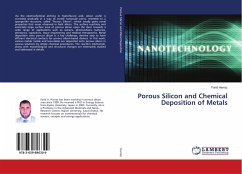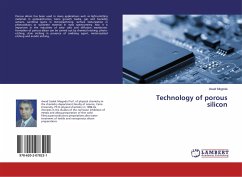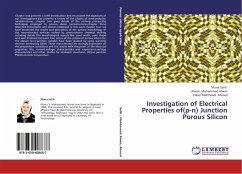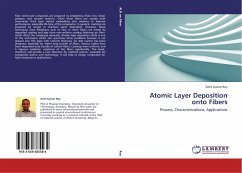
Porous Silicon and Chemical Deposition of Metals
Versandkostenfrei!
Versandfertig in 6-10 Tagen
43,99 €
inkl. MwSt.

PAYBACK Punkte
22 °P sammeln!
Via the electrochemical etching in hydrofluoric acid, silicon wafer is corroded gradually in a way to create nanoscale pores, resemble to a sponge-like structure, called "Porous Silicon", which totally gives novel properties that never observed in bulk silicon. The surface reactivity and extremely large surface area of porous silicon open the door towards a wide range of applications such as sensors, photovoltaics, batteries, photonics, capacitors, tissue engineering and medical therapeutics. Metal deposition onto porous silicon is a key challenge, decisive step to form efficient electrical co...
Via the electrochemical etching in hydrofluoric acid, silicon wafer is corroded gradually in a way to create nanoscale pores, resemble to a sponge-like structure, called "Porous Silicon", which totally gives novel properties that never observed in bulk silicon. The surface reactivity and extremely large surface area of porous silicon open the door towards a wide range of applications such as sensors, photovoltaics, batteries, photonics, capacitors, tissue engineering and medical therapeutics. Metal deposition onto porous silicon is a key challenge, decisive step to form efficient electrical contacts for porous silicon-based devices. In this work, various metals (noble and less-noble) are deposited onto porous silicon in various solutions by simple chemical procedures. The reaction mechanism, along with morphological and structural changes are extensively studied and addressed in details.












